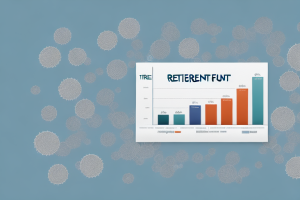Retirement planning can be a complex task, requiring careful consideration and thought. One common guideline that retirees often turn to is the 3% rule. In this article, we will explore what the 3% rule entails, its significance for retirees, and how it can help you plan for a financially secure retirement.
Understanding the concept of the 3% rule in retirement
The 3% rule is a retirement planning strategy that suggests withdrawing 3% of your investment portfolio each year to cover your living expenses during retirement. The idea behind this rule is to strike a balance between enjoying your retirement years without depleting your savings too quickly. By limiting your annual withdrawals to 3% of your portfolio, you aim for sustainable income that can last throughout your retirement years.
It’s important to note that the 3% rule is not a hard and fast rule that guarantees financial security. Rather, it serves as a general guideline to help retirees estimate a sustainable withdrawal rate from their investment portfolio.
The significance of the 3% rule for retirees
The 3% rule holds significant importance for retirees as it can provide a framework for determining an appropriate withdrawal rate from their retirement savings. By adhering to this rate, retirees can hopefully ensure their funds last throughout their retirement years, preventing the risk of running out of money prematurely.
Retirement is a time of financial uncertainty, with various factors such as market fluctuations, changing economic conditions, and personal circumstances affecting retirees’ financial well-being. The 3% rule aims to mitigate some of these uncertainties by offering a conservative withdrawal rate that allows for potential market downturns and unexpected expenses.
How the 3% rule can help you plan for a financially secure retirement
The 3% rule can be a valuable tool in retirement planning, as it encourages individuals to carefully consider their long-term financial needs. By adhering to a sustainable withdrawal rate, retirees can better plan and budget for their retirement lifestyle.
Implementing the 3% rule involves determining the total value of your investment portfolio, and then calculating 3% of this amount to establish your annual withdrawal amount. This withdrawal amount can then serve as a benchmark for budgeting and determining your annual spending limit.
By following the 3% rule, retirees can address concerns related to the longevity of their retirement savings. It helps avoid the common mistake of withdrawing too much too soon, which can quickly deplete savings and potentially leave retirees facing financial hardship in later years.
Exploring the origins and history of the 3% rule in retirement planning
The origins of the 3% rule can be traced back to the Trinity Study conducted in the 1990s. The study analyzed historical stock and bond market data to determine sustainable withdrawal rates for retirees. Researchers found that by withdrawing 3% of the initial portfolio value and adjusting for inflation annually, individuals could have a high degree of confidence in their funds lasting for 30 years or more.
Since the Trinity Study, the 3% rule has gained recognition and popularity among retirees and financial advisors alike. It has become a widely accepted guideline in retirement planning discussions and has helped shape the strategies of many individuals seeking a financially secure retirement.
The role of the 3% rule in determining sustainable withdrawal rates during retirement
The 3% rule plays a vital role in determining sustainable withdrawal rates for retirees. By adhering to this guideline, individuals can calculate a withdrawal rate that aligns with their investment portfolio size and desired retirement lifestyle.
Retirees often grapple with the dilemma of how much they can safely withdraw from their savings each year without jeopardizing their financial security. The 3% rule takes into consideration the potential for market volatility, inflation, and other uncertainties, providing a conservative yet practical approach to estimating withdrawal rates.
It’s important to note that the 3% rule is not suitable for every retiree. Factors such as individual risk tolerance, investment portfolio composition, and personal circumstances should be taken into account when determining an appropriate withdrawal rate.
Key factors to consider when applying the 3% rule to your retirement strategy
When applying the 3% rule to your retirement strategy, several key factors should be considered to ensure its suitability for your specific circumstances.
Firstly, the size of your investment portfolio is crucial. The 3% rule assumes that your portfolio can generate adequate returns to sustain your chosen withdrawal rate. If your portfolio is relatively small, the 3% rule may not provide sufficient income for your needs, and alternative strategies should be explored.
Secondly, inflation must be accounted for when implementing the 3% rule. Inflation erodes the purchasing power of money over time, and retirees need to adjust their withdrawals annually to keep pace with rising prices.
Additionally, your anticipated retirement span should be considered. The 3% rule is designed to provide income for a 30-year retirement period. If you expect to retire early or have longevity in your family history, you may need to adjust the rule accordingly.
Is the 3% rule still relevant in today’s economic landscape?
The 3% rule has been widely debated in recent years, given the current economic climate characterized by historically low interest rates and increased market volatility. Critics argue that the rule may be too conservative for today’s retirees, as it may unnecessarily limit their spending and enjoyment during retirement.
However, proponents of the 3% rule contend that its conservative nature aligns with the goal of ensuring retirement income sustainability. They argue that retirees should prioritize protecting their savings against potential market downturns and unexpected expenses rather than risking overspending during retirement.
Ultimately, the relevance of the 3% rule in today’s economic landscape depends on individual circumstances and risk tolerance. Consulting with a financial advisor can help determine whether the 3% rule is suitable for your retirement strategy or if alternative approaches should be considered.
Common misconceptions about the 3% rule and debunking them
Although the 3% rule is widely acknowledged, several misconceptions surround its application and effectiveness in retirement planning. Let’s address some of these misconceptions and debunk them:
Misconception 1: The 3% rule guarantees financial security. While the 3% rule provides a framework for sustainable withdrawals, it cannot guarantee financial security in all scenarios. Factors such as market performance, inflation fluctuations, and individual circumstances can impact the effectiveness of the rule.
Misconception 2: The 3% rule is too restrictive. Critics argue that the 3% rule may be too conservative and limit retirees’ ability to enjoy their retirement years fully. However, the rule’s intention is to provide a safety net, ensuring a steady stream of income throughout retirement.
Misconception 3: The 3% rule applies to all retirees. The 3% rule is a generalized guideline and may not be appropriate for everyone. It is crucial to consider personal financial circumstances and adjust the rule accordingly. Some individuals may require higher or lower withdrawal rates based on factors such as other sources of income or specific financial goals.
Pros and cons of using the 3% rule as a guideline for retirement planning
Using the 3% rule as a guideline for retirement planning has its benefits and limitations. Let’s explore the pros and cons:
Pros:
- The 3% rule offers a conservative approach to retirement withdrawals, minimizing the risk of running out of savings.
- The rule provides a systematic and straightforward guideline for estimating sustainable withdrawal rates.
- The 3% rule considers potential market downturns and inflation, supporting income stability throughout retirement.
- By adhering to the rule, retirees can more effectively manage their finances and budget for their retirement lifestyle.
Cons:
- The 3% rule may be too conservative for some retirees, limiting their ability to spend and enjoy retirement fully.
- Changes in personal circumstances, market conditions, or expected longevity may require adjustments to the rule, potentially complicating retirement planning.
- The guideline assumes a standardized approach that may not account for individual risk tolerance, investment preferences, or taxation considerations.
It’s important to evaluate the pros and cons of the 3% rule within the context of your specific retirement goals and financial situation. Consider consulting with a financial advisor to determine how the rule aligns with your retirement planning needs.
Adjusting the 3% rule for inflation: Tips for maintaining your purchasing power in retirement
Inflation can erode the purchasing power of your retirement income over time. To ensure your funds continue to meet your needs, adjustments for inflation should be made when applying the 3% rule.
One approach to addressing inflation is to adjust your annual withdrawal amount by the inflation rate. For example, if inflation is estimated to be 2% in a given year, you would increase your withdrawal amount by 2% to maintain your purchasing power. By regularly reviewing and adjusting your withdrawal rate, you can help safeguard your retirement income against the impact of rising prices.
Another strategy to consider is investing a portion of your portfolio in assets that tend to perform well during inflationary periods, such as certain commodities or inflation-protected bonds. This approach aims to provide an additional cushion against the erosion of purchasing power.
It’s important to strike a balance between protecting your purchasing power and maintaining a sustainable withdrawal rate when adjusting for inflation. Consulting with a financial advisor can help you navigate this process and customize an approach that suits your specific retirement needs.
Alternative strategies to consider alongside or instead of the 3% rule in retirement planning
While the 3% rule may be a popular guideline, it’s essential to recognize that it might not be the right fit for everyone. Alternative strategies can be explored alongside or instead of the 3% rule to best align with individual circumstances and goals. Some options to consider include:
Dynamic withdrawal strategies: These strategies adjust the withdrawal rate based on market conditions and portfolio performance. Examples include the “Guyton-Klinger rule” or “floor and ceiling” approaches, which provide flexibility to adapt to changing circumstances.
Bucketing strategy: This strategy involves segmenting your portfolio into different buckets to satisfy short-term, intermediate, and long-term income needs. By segmenting your investments based on time horizons, you can allocate assets more effectively and potentially reduce reliance on a fixed withdrawal rate.
Guaranteed income sources: Consider incorporating guaranteed income sources such as annuities into your retirement plan. Annuities provide a regular stream of income that can supplement your investment portfolio and provide added stability in retirement.
Consulting with a financial advisor: Seeking guidance from a financial advisor is highly recommended when considering alternative retirement planning strategies. A financial professional can assess your unique situation, risk tolerance, and financial goals to help develop a comprehensive retirement plan that aligns with your needs and objectives.
Real-life success stories: How individuals have used the 3% rule to achieve their retirement goals
Real-life success stories can provide inspiration and reassurance for those considering the 3% rule for retirement planning. These anecdotes demonstrate how individuals have utilized the rule to achieve their goals and maintain financial security throughout retirement.
For example, John and Mary, a retired couple, followed the 3% rule after careful analysis of their investment portfolio and retirement lifestyle. By adhering to the rule, they were able to navigate uncertain economic times and enjoy their retirement years worry-free. Their disciplined approach to budgeting and withdrawal rates allowed them to balance financial security and the ability to pursue their passions and personal interests.
These success stories highlight the importance of thoughtful planning, disciplined financial management, and flexibility when following the 3% rule. While individual results may vary, these examples illustrate the potential benefits of incorporating the rule into your retirement strategy.
When and how to re-evaluate your retirement plan based on changes in market conditions and personal circumstances
Regularly re-evaluating your retirement plan is essential to ensure it remains aligned with your changing financial landscape and goals. Changes in market conditions and personal circumstances may necessitate adjustments to your plan.
Market fluctuations, economic shifts, or regulatory changes can impact the performance of your investment portfolio and your overall retirement income. It’s crucial to regularly review your investments, assess risks, and consider adjustments to your asset allocation or withdrawal rates when necessary.
Personal circumstances such as changes in health, familial obligations, or unexpected expenses can also impact your retirement plan. Life events may require adjustments to your budget, withdrawal rates, or financial goals. Regularly reassessing your plan and addressing these changes promptly can help ensure ongoing financial security.
Consider scheduling annual or biennial reviews with a financial advisor to discuss your retirement plan and make necessary adjustments. A professional can provide insights, expert guidance, and tailored recommendations based on your evolving circumstances.
Expert insights: Financial advisors’ perspectives on implementing the 3% rule in retirement planning
Financial advisors play a crucial role in assisting individuals with retirement planning, including navigating the 3% rule. Their insights can provide valuable perspectives and guidance for those seeking to implement the rule effectively.
Many financial advisors emphasize the importance of personalized retirement planning that goes beyond a fixed guideline like the 3% rule. While the rule can serve as a helpful starting point, a comprehensive approach considers an individual’s unique risk tolerance, financial goals, and investment preferences.
When consulting with a financial advisor, be prepared to discuss your retirement objectives, risk tolerance, investment strategy, and any concerns or expectations you may have. Their expertise and experience can help optimize your retirement plan and provide peace of mind throughout your retirement journey.
Common challenges and potential solutions when applying the 3% rule to different retirement scenarios
Applying the 3% rule to different retirement scenarios can present unique challenges. Let’s explore some common challenges and potential solutions:



